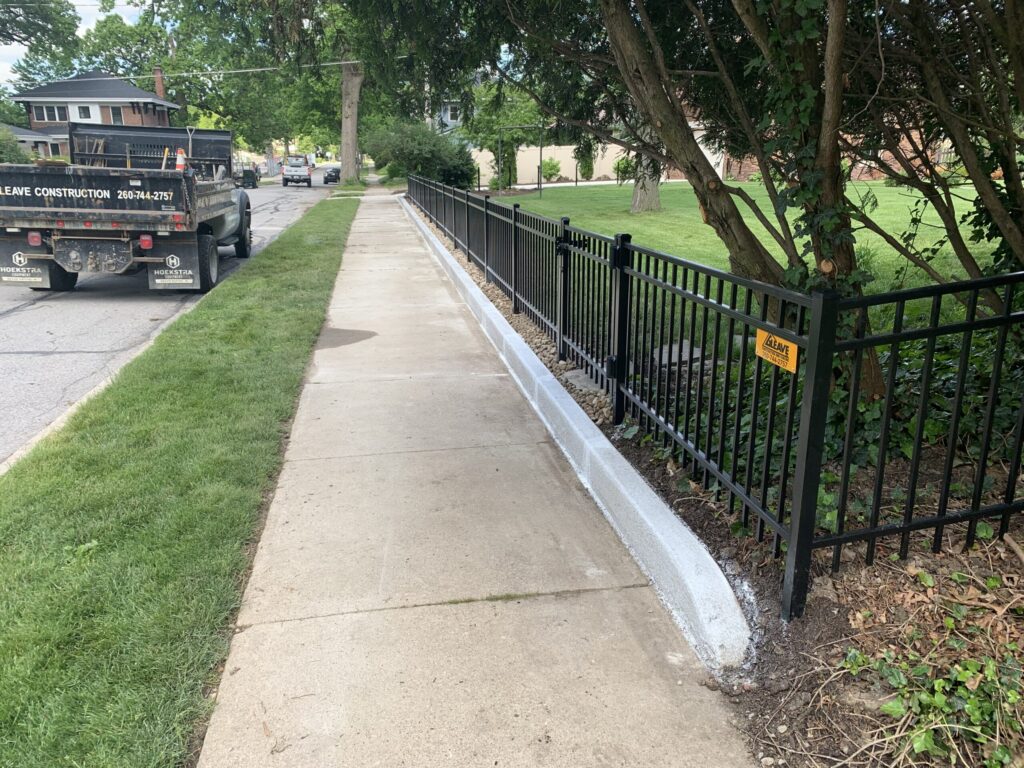Fencing installers are well-versed in environmental issues, including erosion, ground slope, and soil composition. They can also provide information on where and how to install fences, both practically and in accordance with the law. Their experience with fencing-specific tools verifies that the work will be fast, accurate, and minimize material waste and alignment problems. Here’s what to expect from professional fencing contractors during installation:
Adhering to Property Lines
Fencing specialists will identify the location to place the fence legally, verifying it does not trespass on the property of other neighbors. They use physical markers such as iron rods or stakes to identify real boundary lines. Contractors are also familiar with municipal fence codes regarding height, style, and setbacks to sidewalks or driveways. They adhere to the laws of visibility and have experience with homeowner association regulations, such as material limitations or shared fences. To avoid underground damage, professional fencing workers can also liaise with utility providers before excavation.
Operating Specialized Fencing Tools
Fencing contractors utilize specialized tools for precise post-hole digging, which provides straight lines and long-term anchors. Tools such as post-hole augers enable them to dig uniformly in different soil conditions quickly. They apply post levels and string lines to make every fence post straight and vertical. Proper drainage and support mechanisms, such as tamping bars and gravel bases, are placed underneath posts before concrete is poured. Specialty tools also minimize material waste and help enhance your fence’s lifespan through secure fittings.
Planning Property Layouts
Fencing contractors will design layouts according to the property’s layout, the terrain shape, and access needs, such as gates or clearances. They evaluate the terrain slopes, making sure that panels are properly spaced and not too far apart. They can also provide advice on how to place fences around patios and gardens.
Contractors also evaluate the intended use of the fence, whether it is used as a pet enclosure, a decorative feature, or a privacy barrier. A fence helps define boundaries in areas such as pools or play spaces. The layout will also affect sightlines, so contractors help homeowners determine if they want more or less visibility in their yard.
Making Fencing Adjustments
Experts inspect gate swings, latches, and tension on the panels after they are installed. They check to make sure that every post is level, even after the concrete has set and the ground has settled. Contractors reposition sagging gates and secure loose hardware, which can help prevent long-term damage.
Some fencing contractors offer post-installation visits to inspect wear or address shifting caused by storms or soil movement. Some maintenance tips include washing vinyl, treating wood, and removing rust from exposed screws and fasteners. They can provide seasonal checklists, such as oiling hinges or inspecting high-traffic gate areas.
Understanding Fencing Materials
Fencing contractors are experts in selecting materials that can withstand prolonged exposure to weather and ground conditions. They assess the influence of soil type on post stability and prescribe the appropriate footing to each material. They also recommend materials that suit privacy, visibility, or pet containment needs. Their understanding of the different fencing materials will help homeowners make informed decisions when selecting a fence type.
Find Reliable Fencing Contractors
Fencing contractors provide comprehensive installation and repair services for commercial or residential needs. They are familiar with local codes, zoning regulations, and neighborhood requirements that govern where and how fences are installed. Their layout plans minimize future terrain, gate, and visibility issues. They are also able to utilize precision equipment and a dedicated workflow to provide straight, long-lasting fences. Find a reliable fencing expert today to learn more about their installation services.

